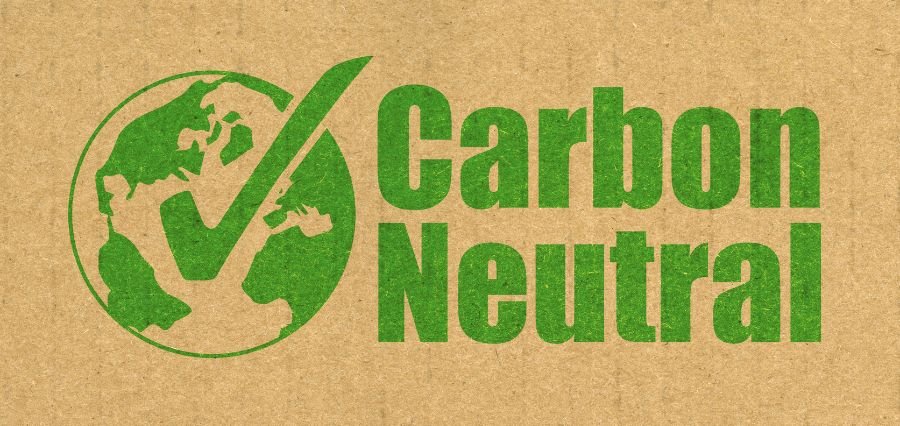Carbon neutral is no longer a buzzword reserved for environmentalists. It’s now a global imperative. With climate change knocking at economies’ and ecosystems’ doors, corporations, governments, and individuals are scrambling to even the carbon playing field. But what is carbon neutral, and why now?
What Does Carbon Neutral Mean?
To be carbon neutral would be to emit as much carbon as is sequestrated by the atmosphere in carbon sinks. The objective of having zero net emission of carbon will thus be attained either by decreasing the emissions or by investments in carbon absorption measures, including afforestation, carbon offsetting, or clean energy schemes.
I.e., for every ton of CO₂ you emit, you must absorb the same amount to prevent net atmospheric accumulation.
Why Companies Are Going Carbon Neutral
The sustainability era has revolutionized business. Going carbon neutral offers companies many advantages:
- Brand Reputation: Environmentally aware consumers reward firms that care about their green image.
- Compliance: Governments are legislatively enforcing stricter control and promoting ecologically friendly practices.
- Innovation: The green challenge spurs product, process, and technology innovation.
- Savings on Energy and Wastes: This can eventually lead to savings on cost as well.
- Investor Interest: ESG investing is trendy, and carbon neutral firms are perceived as being lower-risk.
Steps toward Becoming Carbon Neutral
Carbon neutrality is not an event-it’s a dynamic, on-going process. Here are the steps:
1. Accurate Measurement of Carbon Emissions
Firms should first measure their carbon footprint before it is reduced or offset. They fall under Scope 1 direct emissions by firm operations, Scope 2 energy-related emissions, and Scope 3 third-party or supply chain emissions.
2. Cut Emissions Strategically
- Cut is the best method of being carbon neutral. Some of them are:
- Transition to solar or wind as sources of renewable energy
- Retrofitting of buildings to conserve energy
- Encourage teleworking to reduce travel emissions
- Enhancing the sustainability of the supply chain
3. Equalise the Carbon
It is impossible to repay all the emissions at once. It is possible in this situation to use carbon offsetting. Businesses are able to pay money into accredited schemes, which remove or displace emissions elsewhere. Examples include forest protection, methane trapping at landfill, or paying for research studies on developing world renewables.
4. Openly Publish Progress
Trust is fostered by transparency. Periodic publication of sustainability reports keeps your stakeholders abreast of your carbon neutral path and holds your company accountable.
The Role of Renewable Energy in Becoming Carbon Neutral
Renewable energy is the answer to becoming carbon neutral. Solar, wind, water, and geothermal, compared to fossil fuels, generate little, if any, carbon. The switch to renewables minimizes Scope 2 emissions significantly.
Other businesses are building on-site solar farms or signing power purchase agreements (PPAs) to obtain a reliable supply of clean energy. The result is a flat-out reduction in carbon in steps and an irrefutable step towards long-term sustainability.
Carbon Neutral in Construction and Real Estate
The building industry is the biggest contaminator in the world. All of that came to an end with the introduction of carbon neutral construction. Low-impact materials, passive illumination, and low-energy heating and cooling make intelligent buildings the future.
LEED, BREEAM, and WELL certification systems and track progress. Green belts, roof tops, and rainwater harvesting as urban planning combat carbon footprints in urban planning.
How People Can Lead a Carbon Neutral Lifestyle
It is not just corporations—whoever can, can do their share. Being carbon neutral is equally about reducing personal emissions as contributing to green schemes.
The following are some things to start with:
- Use public transport, carpool, or electric vehicles
- Use energy-efficient equipment and lighting
- Green your consumption by purchasing sustainable brands and products
- Reduce, reuse, recycle
- Offset carbon emissions of travel by donating money to carbon offset accredited projects
Small things, multiplied by millions of people, are significant enough to be effective.
The Economic Benefit of Being Carbon Neutral
Doing well is the best way to do well sustainably. And it’s good economics, to boot:
Enjoy access to environmental capital and green funds
- Future-proof against policy change
- Reduce operating costs through more efficient processes
- Increased staff satisfaction and attraction of talent
- Less exposure to climatic factors
Tax relief, carbon credits, and subsidies by the government are also being provided to organizations achieving carbon neutral status.
The Pitfalls on the Way to Achieving Carbon Neutral
No smooth rides. High front-end costs, absence of infrastructure, difficulty in data tracing, fuzzy regulations can discourage efforts. But technology and co-operation are weakening them.
Innovations like AI-emission monitors, IoT sensors, and blockchain accountability are helping companies to speed up their carbon neutral journey.
Vision 2050: A Carbon Neutral World
Most nations and businesses will be completely carbon neutral by 2050. It’s not a race—but a collective effort. Through collaboration, with innovation, and with policy in response, the planet can grow to become resilient to climate change.
We already see a paradigm shift. Green finance, circular economy, and sustainable agriculture—each and every sector is racing to the global carbon-neutrality goal.
Final Thoughts
Being carbon neutral is not an option—it’s the law of the day. You can be an enterprise leader, a public servant, or an active citizen—your effort counts on the bottom line. It will be challenging, but tomorrow will be cleaner, safer, greener.
Read Also : Michael Crandall | Most Dynamic Business Leaders to Follow in 2024




